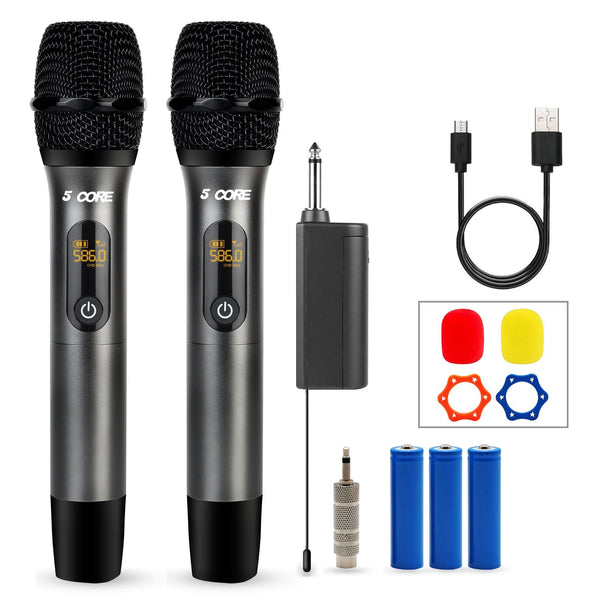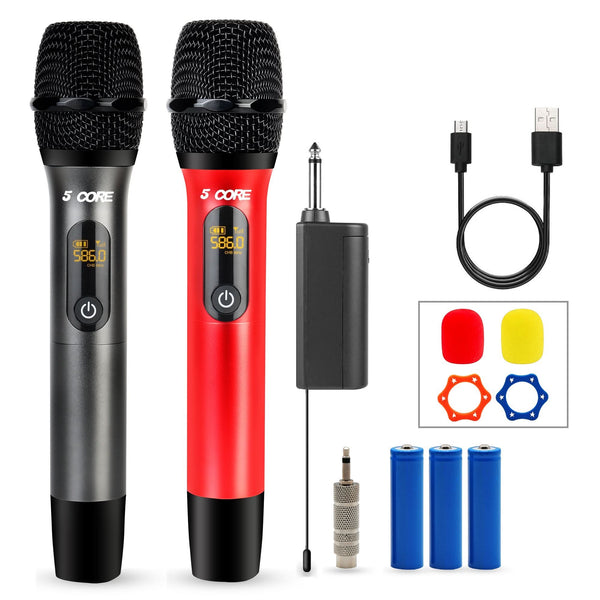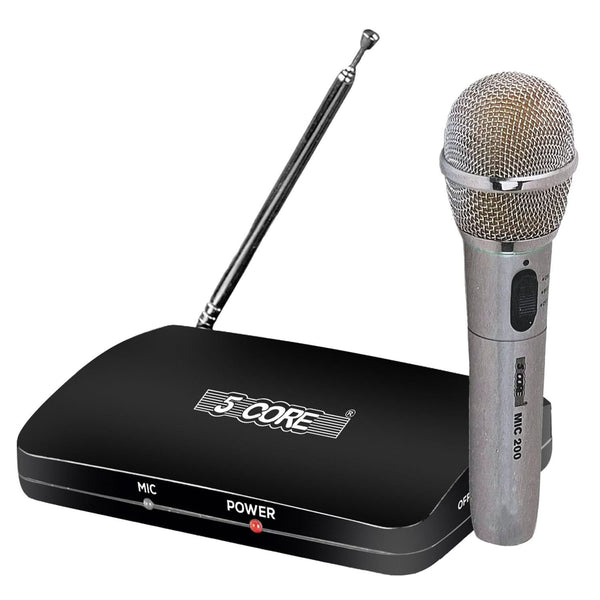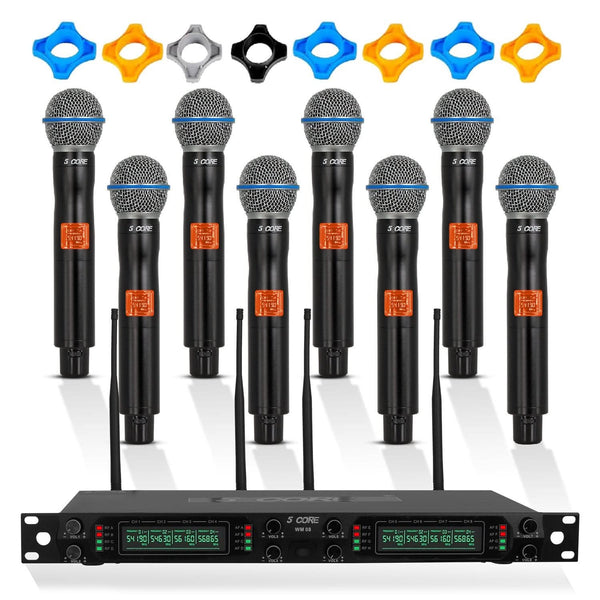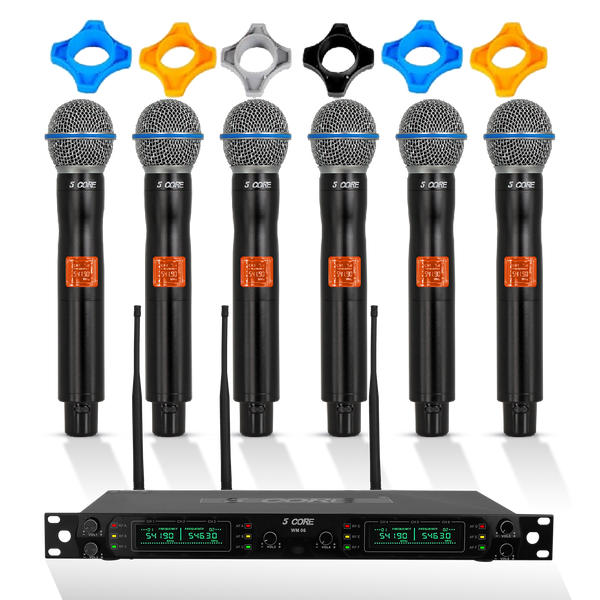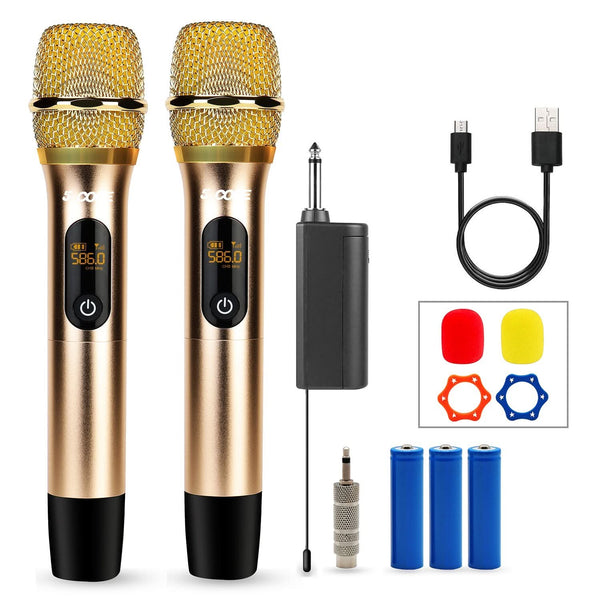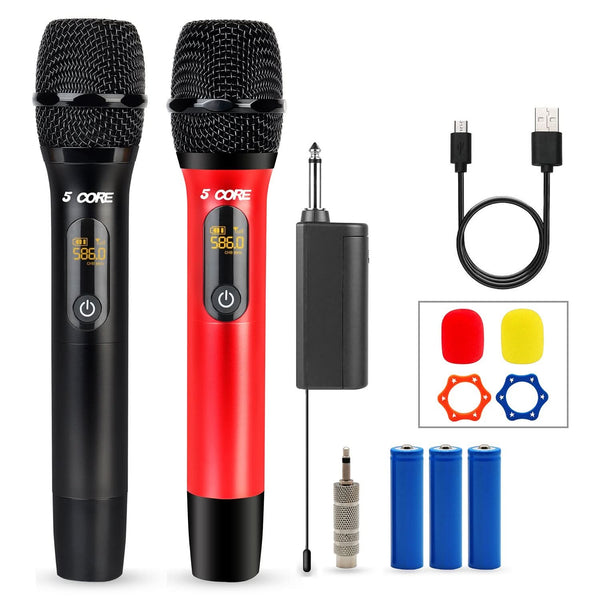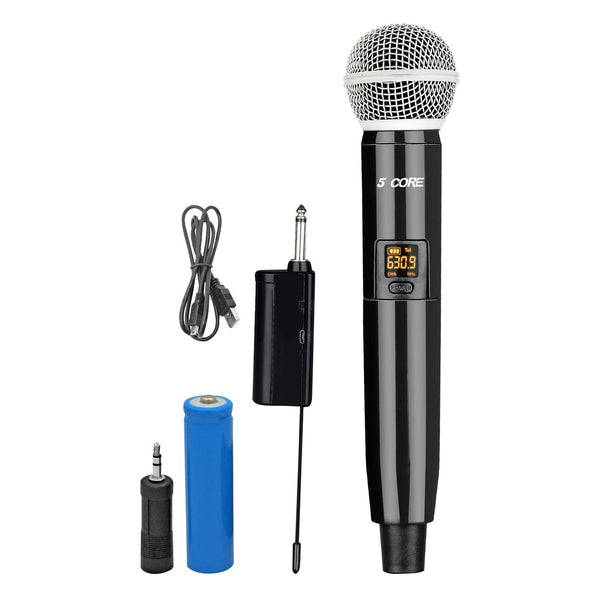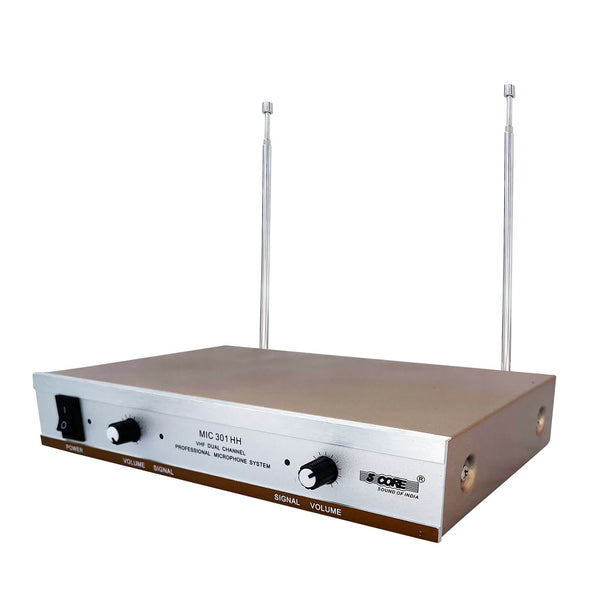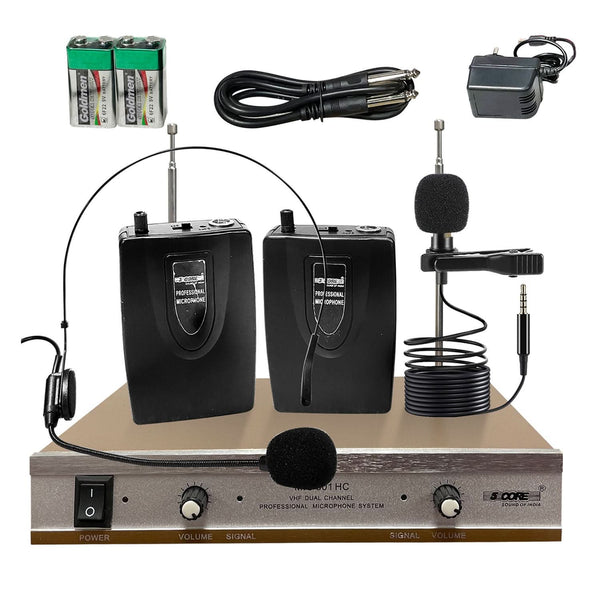
The Ultimate Buyer’s Hub for Wireless Microphones
Wireless microphones have surged 40% in sales since 2023, according to Statista— highlighting the rapidly growing trend toward cable-free audio solutions. Whether you're a karaoke fanatic, content creator, or public speaker, wireless mics and cordless microphones are revolutionizing how sound is captured and delivered. These versatile tools allow you to perform, present, or record on the move without sacrificing sound quality.
Why Choose Wireless Mics? Top Benefits in 2025
Wireless mics have become the go-to choice for performers, speakers, and content creators in 2025. Whether you’re using a wireless mic on stage, a cordless microphone for public speaking, or wireless microphones for karaoke, the advantages are clear.
-
Mobility and Freedom: A wireless microphone gives you complete movement without the hassle of tangled cables. It’s ideal for musicians, presenters, or vloggers who want to move naturally while performing or recording.
-
Interference-Free Transmission: Thanks to advances in digital wireless technology, today’s wireless mics deliver stable, interference-resistant signals. As one expert overview puts it: modern digital wireless systems are more resilient to RF noise compared to earlier analog ones. Avixa Portal and another article highlights adaptive frequency selection, UHF bands and other features that help avoid interference in crowded environments. Avixa Portal
-
Easy and Fast Setup: Unlike traditional XLR microphone setups with long cables, setting up a wireless mic is much simpler—turn it on, sync with the receiver, and you’re ready. This ease of use is especially useful for live events and mobile productions. pro.harman.com
-
Low Maintenance: Without cables running everywhere, there’s less to wear out, tangle, or replace. A cordless microphone helps reduce long-term upkeep and potential cable-related damage.
-
Better Audio Quality: The latest wireless microphone systems now rival wired microphones in fidelity. Digital wireless systems are noted for delivering excellent audio quality while being less prone to artifacts than older analog systems.
-
Versatility: Whether performing on stage, hosting a conference, creating YouTube content, or singing karaoke, wireless microphones adapt easily. They work well across setups—professional studios, classrooms, live shows, or home karaoke sessions.
Types of Wireless Microphones
Handheld Wireless Microphones: A popular choice for singers, hosts, and performers, the handheld wireless microphone offers excellent control and freedom of movement. It’s designed for live shows, speeches, and karaoke sessions where clear vocals and easy handling matter most.
Lavalier (Clip-On) Microphones: Compact and discreet, a lavalier wireless microphone clips onto clothing, making it ideal for interviews, public speaking, and video production. Its small size allows natural movement without drawing attention, while still capturing crisp, consistent audio.
Headset Microphones: For presenters, instructors, and fitness trainers, a cordless headset microphone provides hands-free convenience. It stays securely in place during active movement, ensuring consistent sound and comfort throughout presentations or performances.
Conference Microphones: Wireless conference microphones are built for professional meetings and large events. With multi-channel systems and high-quality transmission, they allow multiple users to speak clearly without interference—making them perfect for boardrooms, webinars, and collaborative discussions.
Each type of wireless mic serves a unique purpose, and choosing the right one depends on your environment and application.
How to Pick the Best Wireless Mic
Choosing the right wireless microphone depends on how and where you plan to use it. Here are some key points to consider before you buy:
1. Purpose and Use Case: Decide what you need it for. A handheld wireless mic works best for singers and stage performers, while a lavalier or clip-on microphone is ideal for interviews and presentations. For fitness or event hosting, go with a wireless headset mic that offers hands-free movement. Source
2. Frequency Range and Connectivity: Look for models that operate on stable UHF or 2.4GHz frequencies to reduce signal dropouts. Ensure the mic can connect easily to your XLR microphone input, mixer, or speaker system. Some modern options even include Bluetooth compatibility for added flexibility.
3. Audio Quality: Choose a system with clear sound reproduction and minimal latency. Digital wireless microphones are now capable of delivering audio quality that rivals wired setups, making them a smart choice for both professional and home use.
4. Battery Life and Power Options: A reliable cordless microphone should have strong battery performance—especially important for live events and outdoor shoots. Rechargeable systems can save on long-term costs and are more environmentally friendly.
5. Range and Interference Protection: Check the operational range, especially if you’ll be moving around a large space. High-quality wireless mics use frequency-hopping or diversity technology to maintain a stable signal even in crowded RF environments.
6. Durability and Build Quality: If you’re using your mic regularly, pick one with a sturdy metal body or reinforced housing. Professional-grade wireless microphones for karaoke and stage use are built to handle frequent handling and travel.
7. Budget and Brand Reputation: While there are many affordable models, investing in a trusted brand ensures reliability, better audio quality, and long-term performance. Always read user reviews and check warranty details before making a purchase.
Wireless Microphone FAQs-
Question: Can I use multiple wireless microphones at the same time?
Answer: Yes, professional wireless systems support multi-channel setups, allowing multiple mics to operate simultaneously without interference by using different frequencies or digital codes.
Question: What is the difference between UHF and 2.4GHz wireless microphones?
Answer: UHF (Ultra High Frequency) offers longer range and resistance to interference but usually requires licensing, while 2.4GHz operates globally with easier setup but may face more interference in crowded Wi-Fi environments.
Question: How do I avoid interference with wireless mics?
Answer: Choose systems with automatic frequency selection, use UHF bands where possible, and keep transmitters and receivers within recommended ranges to minimize signal drops and interference.
Question: Are wireless microphones suitable for outdoor events?
Answer: Yes, wireless mics with high range and robust frequency management work well outdoors, but ensure line-of-sight between transmitter and receiver to maintain signal strength.
Question: Do wireless microphones require special batteries?
Answer: Most wireless mics use standard AA or rechargeable lithium-ion batteries, offering various battery life options depending on model and usage.
Question: Can I connect a wireless microphone to my smartphone or camera?
Answer: Yes, many wireless microphone systems come with adapters or outputs compatible with smartphones, cameras, and audio interfaces used for content creation.
Question: How do I set up a wireless microphone system?
Answer: Setup generally involves charging or inserting batteries, syncing the transmitter and receiver on the same frequency channel, and connecting the receiver to your amplifier, mixer, or recording device.
Question: What accessories do I need for wireless microphones?
Answer: Common accessories include windshields, microphone clips, charging docks, replacement batteries, and carrying cases for protection and convenience.
Conclusion
Wireless mics have evolved into reliable, high-quality tools for performers, presenters, and creators. With options ranging from handheld to lavalier, headset, and conference systems, there’s a model for nearly every use. The key is to match your needs—mobility, sound quality, and setup simplicity—with the right type of mic.
At 5 Core, we offer a wide range of wireless microphone models designed for different purposes and environments, from stage performances to studio recordings and public events. Each system is built to deliver clear sound, dependable range, and the flexibility today’s users expect.
Author Bio-
Alex Even
Hi, I’m Alex Even. I’ve been working in the pro audio industry for over 15 years, specializing in everything from studio recording setups to live sound systems. Whether it’s fine-tuning a PA DJ system, choosing the right microphone, drum stool, keyboard bench or setting up a home studio, karaoke setup, I’ve spent years helping musicians, audio engineers, and content creators get the sound they’re looking for. I’m passionate about making audio technology easy to understand and even easier to use—because great sound should be accessible to everyone.


